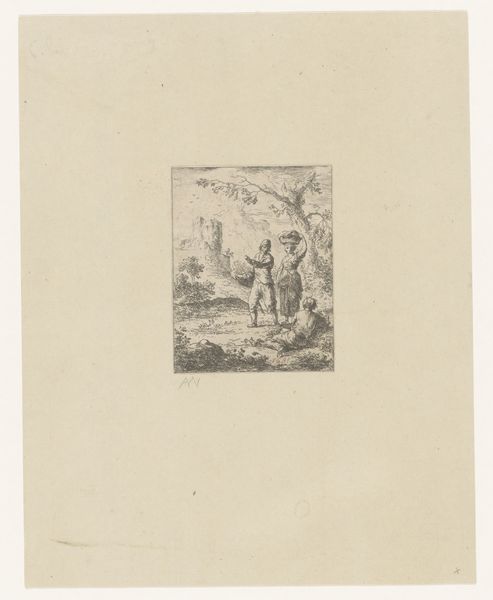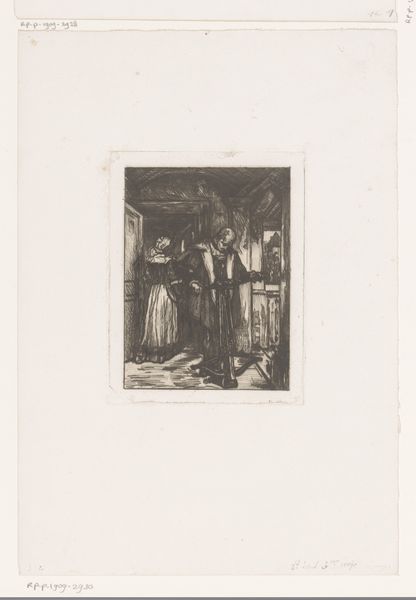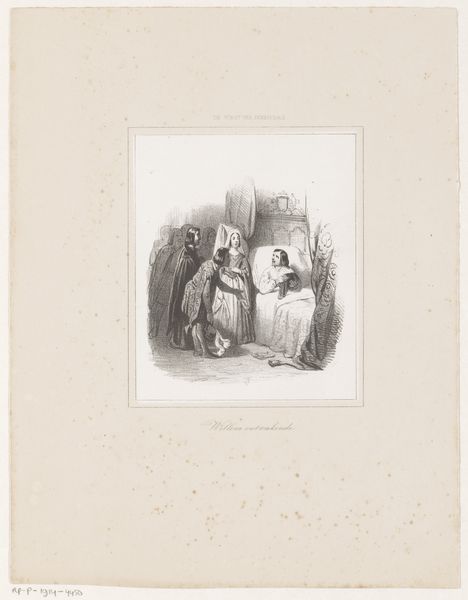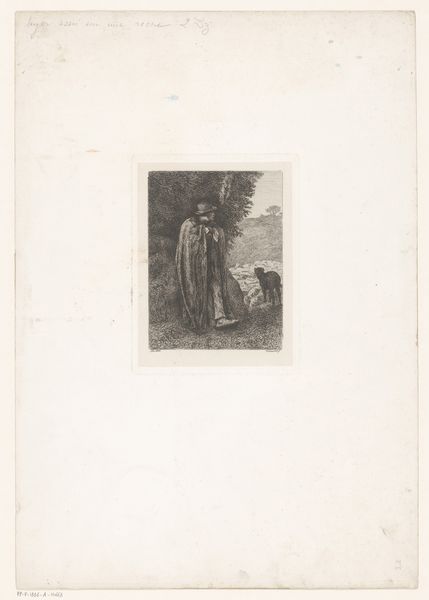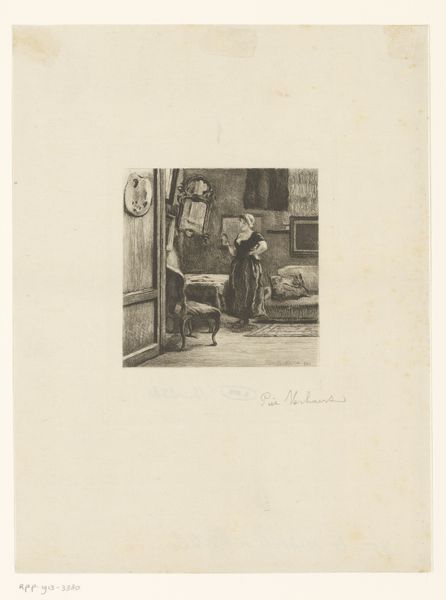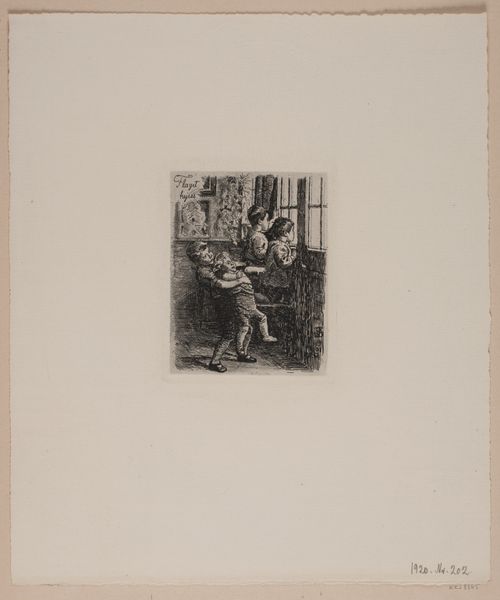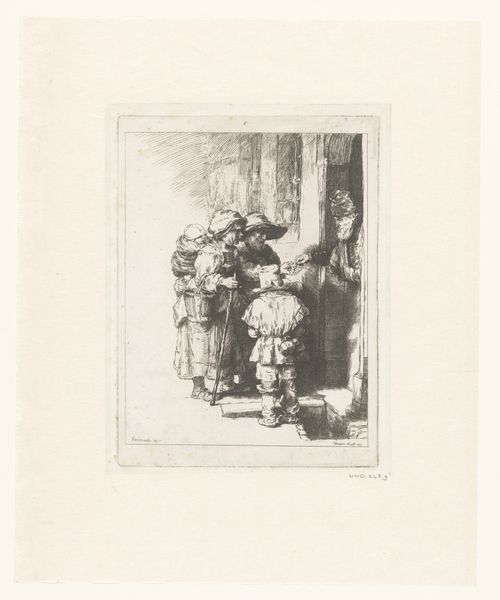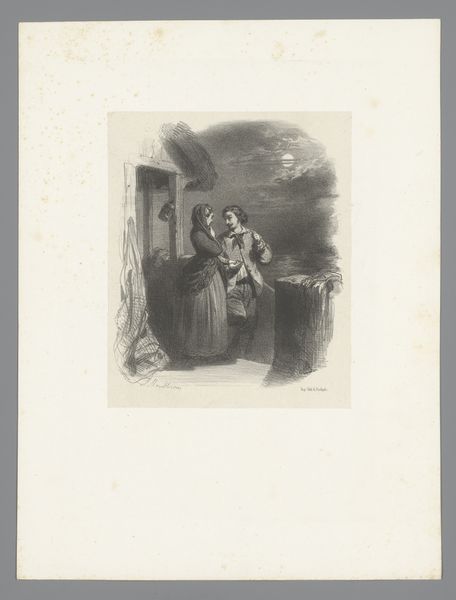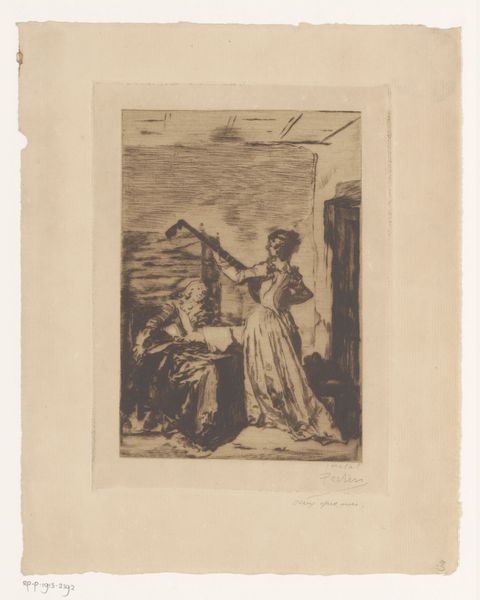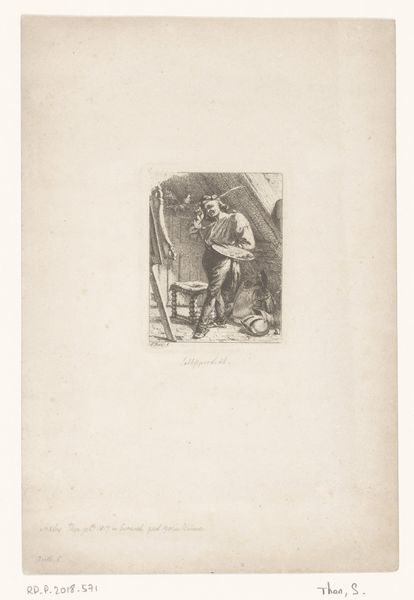
print, etching
#
portrait
# print
#
etching
#
german-expressionism
#
genre-painting
Dimensions: height 109 mm, width 79 mm
Copyright: Rijks Museum: Open Domain
Curator: Here we have "Mother and Child at the Table," an etching created by Max Liebermann sometime between 1857 and 1935. It's currently housed right here in the Rijksmuseum. Editor: Ah, a scene soaked in the gray of everyday life. Immediately, I see the kind of domestic stillness that hums with unspoken stories. Curator: Liebermann’s interest in depicting scenes from daily life places this within the genre painting tradition, capturing intimate moments often overlooked. There is, as well, a leaning toward the aesthetics associated with German Expressionism. Editor: The woman, maybe preparing food... there’s such weight in her posture, almost as if the simple act of feeding her child is a Herculean task. I wonder what’s on her mind... or under her fingernails? Curator: These darker prints depicting women resonate strongly when considered through a feminist lens. Does the muted palette reflect social restrictions placed on women during this period? Is the mother burdened or fulfilled by her role? Editor: Perhaps a little of both, eh? The child at the table…almost feels ghostly. I sense that contrast in every corner of the artwork! Is that the artist implying they live a difficult life and don’t have much? It certainly pulls at your heart, you know. Curator: I think examining the social and economic hardships reflected in genre paintings is exactly the critical engagement we need to bring historical works to contemporary audiences. The work may make us consider modern care disparities and societal expectations around parenting. Editor: It's a snapshot, right? Of lives in quiet turmoil... beautiful in its grim reality, just as real life can be. The little glimpses of love or just a parent taking care of her children; it always leaves you guessing as to how the figures felt when the painting was first created. Curator: A work of art is never just the intentions of its creator; it's a dialogue that expands through the voices of generations. Thank you for offering your interpretation! Editor: And thank you for laying out all the hard history and the theories; maybe after all, what the world needs now *is* love, sweet love—or at least one good etching that holds an image of it!
Comments
No comments
Be the first to comment and join the conversation on the ultimate creative platform.

